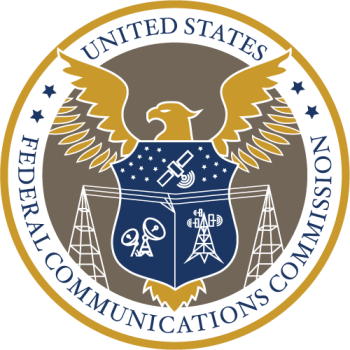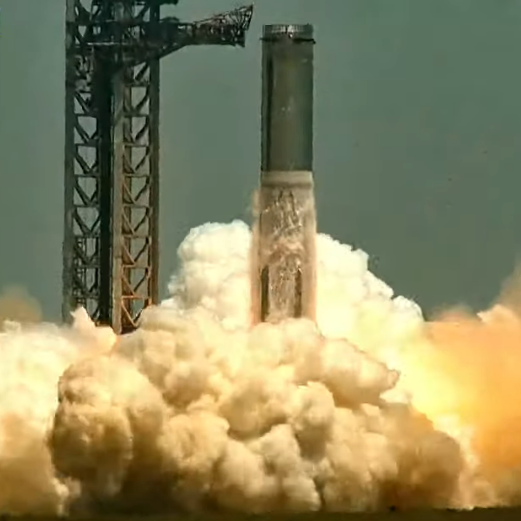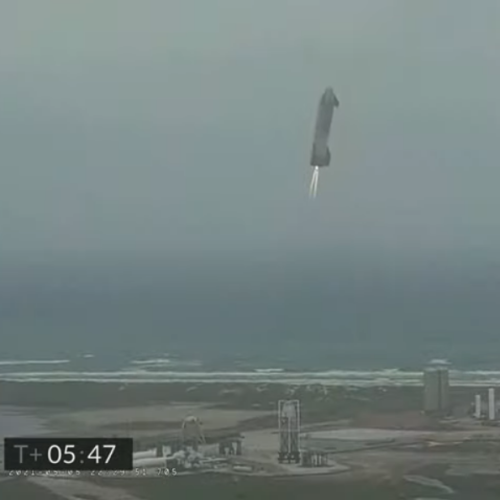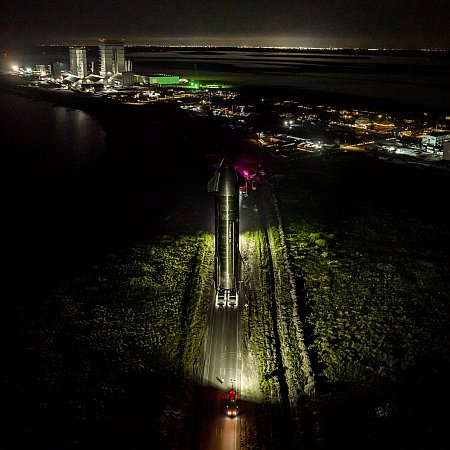The icy terrain near one of Starship’s prime candidate landing spots on Mars
Cool image time! The picture to the right, cropped to post here, was taken on August 22, 2023 by the high resolution camera on Mars Reconnaissance Orbiter (MRO). The camera team labeled the picture a “terrain sample,” which generally means it was not taken as part of any scientist’s specific research request, but to fill a gap in the schedule so as to maintain the camera’s proper temperature. When the team needs to do this, they try to pick a location in the gap that might have some interesting features. Sometimes such pictures show relatively boring features. Sometimes the results are fascinating.
In this case the location chosen was in the northern lowland plains of Mars, in a region called Amazonis Planitia. At 38 degrees north latitude it is not surprising that the photo shows ice features. All the depressions here appear to have an eroding glacier, while the surrounding plateau resembles an untouched snow field in the very early spring, the snow beginning to sublimate away to leave the top rough and stuccoed. Note too that these depressions are likely not impact craters (they have no upraised rims and many are distorted in shape), but were likely formed by that same sublimation process.
» Read more
Cool image time! The picture to the right, cropped to post here, was taken on August 22, 2023 by the high resolution camera on Mars Reconnaissance Orbiter (MRO). The camera team labeled the picture a “terrain sample,” which generally means it was not taken as part of any scientist’s specific research request, but to fill a gap in the schedule so as to maintain the camera’s proper temperature. When the team needs to do this, they try to pick a location in the gap that might have some interesting features. Sometimes such pictures show relatively boring features. Sometimes the results are fascinating.
In this case the location chosen was in the northern lowland plains of Mars, in a region called Amazonis Planitia. At 38 degrees north latitude it is not surprising that the photo shows ice features. All the depressions here appear to have an eroding glacier, while the surrounding plateau resembles an untouched snow field in the very early spring, the snow beginning to sublimate away to leave the top rough and stuccoed. Note too that these depressions are likely not impact craters (they have no upraised rims and many are distorted in shape), but were likely formed by that same sublimation process.
» Read more













